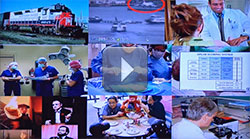5.1 – The power of complex services: foster, use, and abuse
Part 1 – Balancing creativity, judgment, and discipline
The contrast between two transportation accidents (Southern Pacific 7551 and US Airways 1549) provide the background required to understand what a quality culture means in complex services. Rigorous training and enforcement of well thought-out and shared rules combines with freedom to act to produce the best outcome when experts are faced with unforeseen circumstances. On the other hand, a « good enough » quality culture slowly takes hold as sloppy work without immediate consequence is tolerated. The silo mindset hides the potentially devastating systemic effect of these defects.
Part 2 – On diagnosis, leadership, operational focus, and the power of a good metric
Examples discussed here include the doctor’s office, the surgical block, Shouldice hospitals, the Apgar score to measure to immediately measure the health of newborn baby, and the social emergency team intervening when children are at risk. “First do no harm” is an oath that all complex service provider should make their own. Largely determined by history, inertia, and drift, our operating units often mix together incompatible activities, and are thus unmanageable. Deconstructing these jumbled flows and rebuilding focused units makes management (appropriate balance between autonomy and control) possible. Quick response to emerging needs, by a multifunctional « commando » unit can trigger a paradigm changing breakthrough
Part 3 – Some ingredients in the recipe for the memorable customer experience
Without a profound shared understanding of the nature of value in our business and of the different demands it makes on our experts, our processes and performance will evolve randomly, as a result of actions made on the spur of the moment by a host of uncoordinated experts. CEO should stands for Chief Emotions Owner – meaning the emotions of the customer, and those of the employee. Nevertheless, as client, we must always assume the primary responsibility for results, that is, we are managing our way through the information flows and branching points of the service maze.


